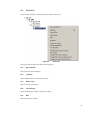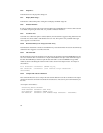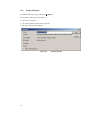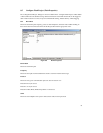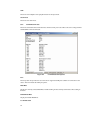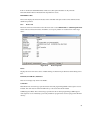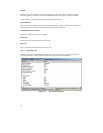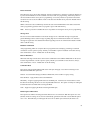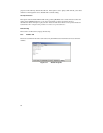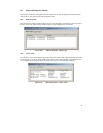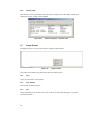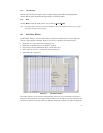87
Device Protection
This allows the user to select either automatic protection (Automatic) or interactive protection (Interactive)
to protect the FLASH device from accidental over-erasure and over-programming. Automatic protection
will erase blocks from the device prior to programming, as necessary. Interactive protection will ask the
user before an erase occurs.In addition, None can be selected to disable device protection. Double click to
edit the setting.
Whilst connected to a device FDT keeps track of the state of the FLASH blocks and is able to determine
when a programming operation will over-program a region of FLASH memory.
Note If device protection is disabled the user is responsible for erasing the device prior to programming.
Message level
The user can select either Standard or Advanced message levels. A Standard message level generates
general FDT/target device status messages regarding high-level communications details. An Advanced
message level generates more detailed information regarding lower level communications details. Double
click to edit the setting.
Readback Verification
After programming, FDT can verify the data was programmed successfully by performing a read-back
verification. Use this option to specify whether you would like to perform read-back verification, always,
after confirmation, or never. Double click to edit the setting.
Reset on Disconnect
When disconnecting from the device when used in combination with a UPB or FDM, FDT can be used to
reset the target hardware. Use this option to specify whether you would like to reset the device, always,
after confirmation, or never. Double click to edit the setting.
Connection Reset
This option controls whether FDT should set the mode pins and apply a reset when connecting in User
Mode with the FDM. The options are:
Default – Uses the default settings (Set Reset & Mode Pins). This is held in a registry setting.
Reset & Mode – Apply the Reset and set the Mode Pins
Mode Only – Suppress applying the Reset but set the Mode pins. Note that care must be taken to ensure
that this will not damage the device or cause unpredictable behaviour. This option is mainly for making the
transition between User Mode and User Program Mode
None – Suppresses applying the Reset and setting the Mode pins.
Reinterrogate on Disconnect
This option forces FDT to reinterrogate Generic Boot devices on connection. With this option set to "No"
(default), the device settings are saved in an automatically generated fcf file and re-used. With this option
set to "Yes", FDT will always reinterrogate the device for its details upon connection; this allows one



